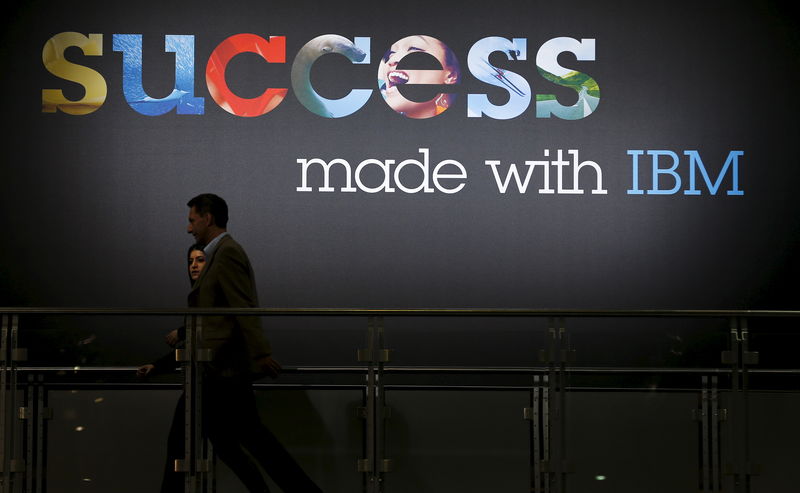Stock market today: Nasdaq closes above 23,000 for first time as tech rebounds
ARMONK, N.Y. - IBM (NYSE: IBM), a prominent player in the IT Services industry with a market capitalization of $211.35 billion and annual revenue of $62.83 billion, has announced the launch of new artificial intelligence (AI) capabilities within its cybersecurity services, aimed at improving the efficiency and accuracy of threat detection and response. The introduction of the Autonomous Threat Operations Machine (ATOM) and the X-Force Predictive Threat Intelligence (PTI) agent represents a significant advancement in the company’s managed detection and response offerings. According to InvestingPro data, IBM’s strong financial health and market position are reflected in its impressive 43.74% stock return over the past year.
ATOM is designed to autonomously manage threat triage, investigation, and remediation, reducing the need for human intervention. The system’s agentic AI framework operates by coordinating multiple AI agents to enhance the threat detection process. These agents work together to analyze alerts, conduct risk assessments, create investigation plans, and execute remediation actions. This orchestration aims to allow security teams to concentrate on more critical threats, potentially reducing the time spent on false positives or less urgent risks. With a robust gross profit margin of 57.04%, IBM demonstrates strong operational efficiency in delivering such innovative solutions. For detailed analysis and additional insights, investors can access the comprehensive Pro Research Report available on InvestingPro.
In addition to ATOM, IBM has also unveiled the X-Force PTI agent. This tool utilizes AI to generate predictive insights into potential adversarial activities, aiming to minimize the manual effort required for threat hunting. The PTI agent is built on proprietary AI models and is trained using cybersecurity data to provide contextualized threat intelligence. By aggregating data from over 100 sources, PTI can identify early indicators of behavior that may lead to compromise, offering businesses a proactive approach to cybersecurity.
Mark Hughes, Global Managing Partner for Cybersecurity Services at IBM, emphasized the challenges organizations face with sophisticated cyber threats and the role of agentic AI in automating threat hunting to improve detection and response times. He highlighted the potential for these AI capabilities to unlock new value in security operations and alleviate the burden on scarce security resources.
ATOM is vendor-agnostic and integrates with existing security solutions from IBM and partners, including Google Cloud and Microsoft, to provide AI-driven orchestration for threat detection and response. IBM’s role as a global systems integrator and managed security services provider includes managing security operations center outcomes for clients.
This development in IBM’s cybersecurity offerings will be showcased at the RSAC 2025 Conference in San Francisco this week, where IBM will be present both on-stage and at their booth.
The information in this article is based on a press release statement from IBM.
In other recent news, IBM announced its first-quarter 2025 earnings, surpassing Wall Street expectations with an earnings per share (EPS) of $1.60 and revenue totaling $14.54 billion. Despite this positive performance, the company’s stock experienced a decline of 6.87% in pre-market trading, indicating investor concerns about future growth prospects. IBM also committed to a substantial $150 billion investment over the next five years to strengthen U.S. technology leadership, particularly focusing on mainframe and quantum computing. Analyst firms have adjusted their outlooks on IBM, with Stifel maintaining a Buy rating and a $290 price target, while BMO Capital Markets reduced its price target to $260 from $280, citing underwhelming software growth. Oppenheimer also lowered its price target to $290 from $320 but retained an Outperform rating, noting IBM’s steady revenue outlook and strategic initiatives. The company highlighted its strategic focus on AI and cloud services, with significant contributions from its Red Hat and generative AI businesses. IBM’s consulting and infrastructure segments faced challenges, with a 9% decline in consulting signings and a 4% drop in infrastructure revenue, attributed to the end of the Z16 product cycle. Despite these challenges, IBM remains optimistic about its growth strategies, including the anticipated launch of the Z17 product and potential opportunities with HashiCorp.
This article was generated with the support of AI and reviewed by an editor. For more information see our T&C.
